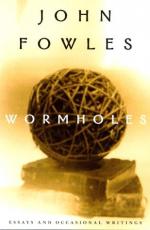|
This section contains 663 words (approx. 3 pages at 300 words per page) |

|
Space-time wormholes are hypothetical objects in German-born Jewish physicist Albert Einstein's general theory of relativity, where intense gravitational fields warp space and time to provide shortcuts from one part of our universe to another (or worse, perhaps, a route from our universe to some other universe). Physicists have not found solid experimental evidence that wormholes exist, but there are reasonably convincing theoretical arguments that strongly suggest that wormholes should be part of the theory of quantum gravity.
As theoretical objects, wormholes were invented and named in the late 1950s by American physicist John Archibald Wheeler, an early pioneer in the quest for quantum gravity. Since then they have become a standard tool in science fiction (such as in the television series Star Trek and Farscape and the novel Einstein's Bridge), but they have also attracted a lot of serious scientific attention. Although physicists cannot conduct any experiments yet...
|
This section contains 663 words (approx. 3 pages at 300 words per page) |

|


